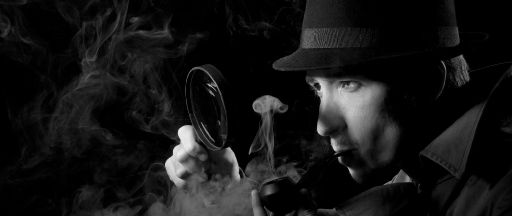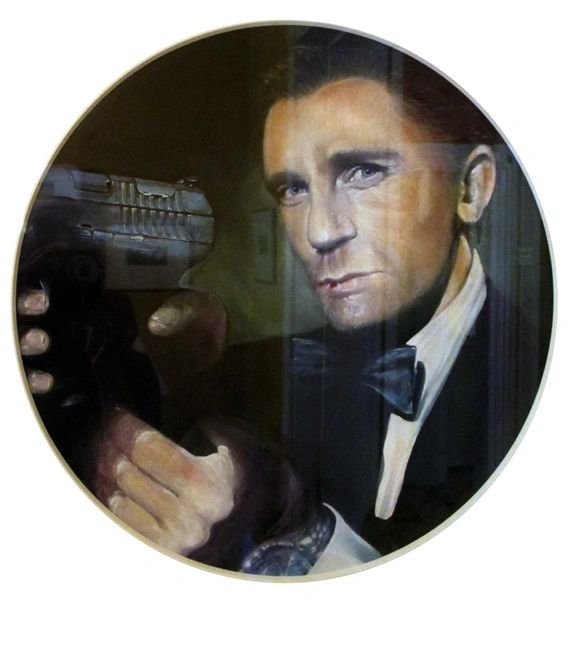case notes and assorted ramblings
from the mind of mystery writer
Elizabeth K. Wadsworth

THE PERPETRATOR:

Elizabeth K. Wadsworth, a.k.a. "The Wiz", "Gumby Girl". Described by authorities as a petite brunette of a certain age. Wanted in connection with several suspicious incidents of a literary nature, the latest being MURDER BALLAD and its sequel MANHATTAN CONFIDENTIAL, both humorous noir detective stories set in post WWII Manhattan.
Elizabeth began her criminal career innocently enough. After receiving a BFA in Puppetry from the University of Connecticut (where she studied under noted professor Frank Ballard), Ms. Wadsworth spent the next 20 years performing with various companies including Concerned Citizens for Humanity and Purple Rock Productions. In 2008, embarked on her long-time dream of writing mystery thrillers.
Believed to be currently hiding out in an historic farmhouse in Connecticut with her partner-in-crime, Al, and an ever-revolving crew of kids, pets, and local delinquents.
IN HER OWN WORDS:
My chosen genre is the hardboiled mystery universe of the mid-twentieth century, the world of Sam Spade, Philip Marlowe, Nick and Nora, Bogie and Bacall. It’s a world of perpetual twilight, of smoky cocktail bars and rain-drenched urban landscapes; mean streets where shady, black satin-clad dames and tough, fedora-wearing private dicks exchange gunfire and witty, sexually-charged banter to the siren wail of a saxophone.
Did this world ever exist in reality, or only in the imaginations of pulp writers and Hollywood producers? I didn’t invent it, but I’ve opted to borrow the tropes of this fictional universe and play with them in creative, self-aware, ironic ways. My genre-savvy hero and heroine are well aware of their roles in this universe, and take great glee in both reinforcing and subverting the clichés of the genre.
I write the kind of stories I like to read. I refuse to self-censor or try and write to any particular demographic, and I don’t follow “trends” in publishing. I’ve always adored comedy and mysteries, so naturally those are the types of stories I’m drawn to and prefer to write. I’d rather make readers laugh than make them squirm, which is why I think of my style as romantic comedy masquerading as noir, and not true noir.
I love characters interesting enough to carry a story on their own without the added attraction of a “whodunit”, and also admire complex plots in which a number of apparently unrelated threads all pull together seamlessly in the end. The City Watch sub-series of Terry Pratchett’s Discworld and Dirk Gently’s Holistic Detective Agency, by the late Douglas Adams, are great examples of this and a constant source of inspiration to me.
The writing process is different for everyone. There’s no right or wrong way to do it—only continued experimentation will help find what works for you. There are seat-of-the-pants writers and outliners, and I’m one of the latter. I need a pretty detailed map if I expect to finish what I’ve started.
Typically, I start with a brief outline of the general plot, which I gradually expand upon until I’ve broken down the story chapter by chapter. Each chapter outline can be a few sentences or up to a full page, depending on how fully I’ve developed the scene ahead of time. I try to find a good balance of action, character development, and exposition (hopefully not too much of the last!)Then comes the actual writing part, usually from beginning to end, but if I get stuck I have no problem putting a scene aside for a while and moving onto something else.
I do most of my writing at night, in my bedroom, when I can work uninterrupted and free from distractions. A lot of people like to listen to music while they write, but I find I prefer total silence; even instrumental music tends to be too distracting for me. Lots and lots of cups of tea are of course, essential.
I re-write and edit heavily. My natural style tends toward the Dickensian and labyrinthine, so the chatty, slangy pulp style doesn’t come easily to me. It’s actually a huge effort to make it sound effortless!
Research is an essential tool when writing in a historical setting (as well as fun for its own sake.) TheNew York Times on microfilm is my friend. So are vintage maps, magazines, and catalogues (thank you, eBay!) and old forensic and police manuals.
As to where my ideas come from, it varies. Sometimes I’ll think of a great name for a character first, and then it’s a matter of fitting that character into a story (or vice versa.) With Raising Angels, my initial inspiration was a dream, but the actual story has evolved into something completely different and unrecognizable. In the case of Murder Ballad, the seeds were sown many years ago when I first read Dashiell Hammett’s The Maltese Falcon and it occurred to me that the story would have been a very different one if told from the perspective of Effie Perrine, Sam Spade’s secretary. The idea of telling a hard-boiled detective story from the secretary’s POV stayed with me, until eventually I just had to start writing it down.



 ...and read an extensive interview with him here:
...and read an extensive interview with him here: